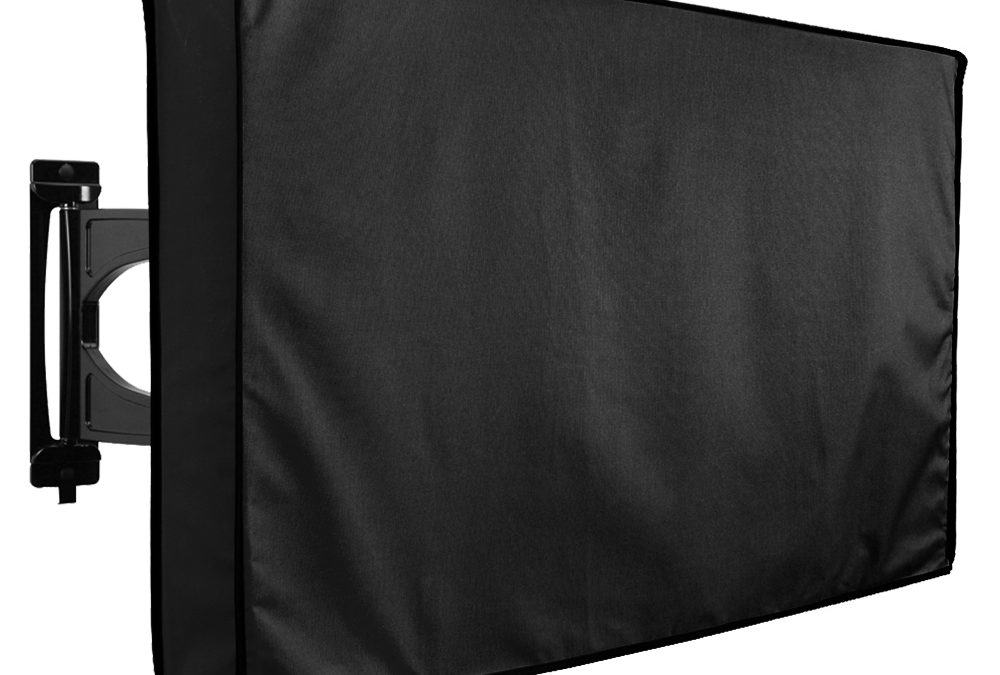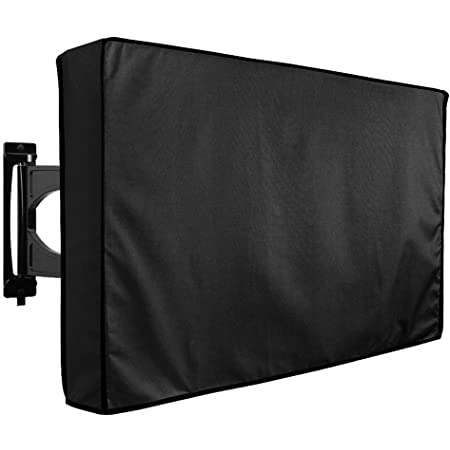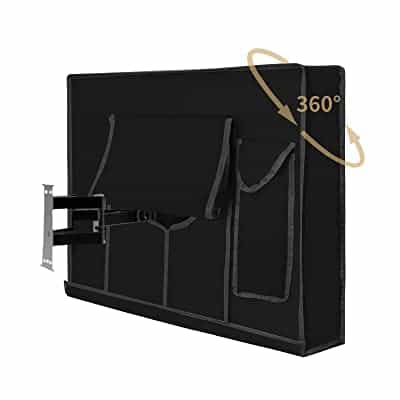Using a cover with your television set is the best way to safeguard it from the elements, guaranteeing you peace of mind with your television set. In fact, a lot of the popular outdoor TV covers can conceal your display completely – including the bottom and back sections, whether it’s mounted to a wall or standing freely. For the best options, see our list of 5 Best TV Covers:
1. Clicks Outdoor TV Cover:

Click has lots of outdoor TV covers for users to explore – ranging from 24-inch TVs to 70-inch behemoths. They all provide roughly the same design, with velcro straps and zips seamlessly letting users fully blanket their TV in the waterproof cover. It can also be purchase for around most bracket styles, extendable, flush or tilting.
2. Kolife Outdoor TV Cover:
This cover offers slightly more broad coverage across TV sizes than its rivals, with its offerings ranging from 22-inch to 75-inch TVs.
Must Read: 4 Best 40/43-Inch Smart TVs
It can keep your television safe from rain, snow and wind, with the velcro seal, ensuring it stays free from scratches at all times. It is even possible for users to throw their remotes into a sizeable pocket on the rear.
3. Amazon Basics Outdoor TV Cover:

Amazon is offering three different sizes to blow you away – 30-32-inches, 46-48-inches and 50-52-inches.
Must Read: 5 Best Affordable TVs Under $500
As long as they fit your model, it is difficult to find a more affordable, easy to install and product. Users will even be allowed to store their remotes. Be rest assured that you’ll be getting value for your money.
4. Easy-Going Outdoor TV Cover:

Easy-Going is the brand that focuses on amazing color choices for your TV cover. With eleven different size options available in black, camel, grey and brown, you will be spoilt for choice.
Must Read: 6 Best 75-Inch TVs To Buy
This product comes with a durable and protective exterior fabric and this should help you prevent any scratches to your screen. It can also handle various types of mounts, thanks to the velcro seal.
5. iBirdie Outdoor TV Cover:
The people at iBirdie might not give you the same type of breadth when it comes to different sizes, but their products are a brilliant choice for an easy-to-use option. Getting your flatscreen inside is quite easy, thanks to the velcro sections, and it is also home to an all-important section for storing remotes. Its soft material on the inside also helps your screen avoid scratches.
More Information On Your Television:
Television (TV), sometimes shortened to tele or telly, is a telecommunication medium used for transmitting moving images in monochrome (black and white), or in colour, and in two or three dimensions and sound.
The term can refer to a television set, a television program (“TV show”), or the medium of television transmission. Television is a mass medium for advertising, entertainment and news.
In 2013, 79% of the world’s households owned a television set. The replacement of early bulky, high-voltage cathode ray tube (CRT) screen displays with compact, energy-efficient, flat-panel alternative technologies such as LCDs (both fluorescent-backlit and LED), OLED displays, and plasma displays was a hardware revolution that began with computer monitors in the late 1990s.
Most TV sets sold in the 2000s were flat-panel, mainly LEDs. Major manufacturers announced the discontinuation of CRT, DLP, plasma, and even fluorescent-backlit LCDs by the mid-2010s.
In the near future, LEDs are expected to be gradually replaced by OLEDs. Also, major manufacturers have announced that they will increasingly produce smart TVs in the mid-2010s. Smart TVs with integrated Internet and Web 2.0 functions became the dominant form of television by the late 2010s.
Television signals were initially distributed only as terrestrial television using high-powered radio-frequency transmitters to broadcast the signal to individual television receivers. Alternatively television signals are distributed by coaxial cable or optical fiber, satellite systems and, since the 2000s via the Internet.
Until the early 2000s, these were transmitted as analog signals, but a transition to digital television is expected to be completed worldwide by the late 2010s.
A standard television set is composed of multiple internal electronic circuits, including a tuner for receiving and decoding broadcast signals. A visual display device which lacks a tuner is correctly called a video monitor rather than a television.



